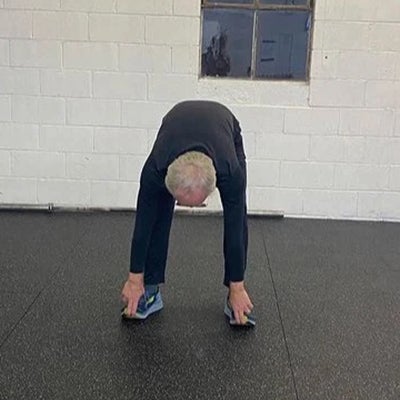Starting and Sustaining Change
“What do you do for exercise?”
Three years ago, medical student Keila Magafas (now a resident in pediatrics) turned this question I had asked her back around to me.
I sputtered a bit as I did not exercise regularly! She went on to assure me I would be comfortable at her gym. A few days later I texted to get the name of the gym (River City CrossFit), and then with some trepidation decided to try it.
I sought to motivate patients toward exercise, but I personally did little exercise — occasional walks with my daughter’s dog or short bike rides to work. The standard guidelines (150 minutes/week of moderate intensity or 75 minutes/week of vigorous intensity aerobic physical activity; muscle-strengthening activities on 2 or more days a week) seemed important, except they did not push me into action!
Blog continued

There were some years of precontemplation while sitting through medical lectures clearly stating the remarkable benefits of exercise for prevention and improvement of chronic disease. And then there was the yearly loving smile from my wife when she would say, “What I want for Christmas is for you to be able to touch your toes!”
The motivation of positive coaches and a culture of encouragement surely goes into the mix to sustain change. Regarding exercise, a setting that is welcoming and ready to empower the not-so-young or those with chronic disease seems critical and hard to achieve.
Cost may also be a barrier. River City CrossFit goes far creating a welcoming and safe environment. Focused coaching can build the confidence for those that are older or with chronic disease. Cheaper local options include the Riverplex and Planet Fitness.
I am grateful for that direct invitation to join River City CrossFit. The result is more flexibility, strength, and endurance. The change translates to less injury potential lifting things and sets up increased success for biking or hikes with family or friends.
Blog continued (Part 3)

Contemplation about other changes are now pondered. What is enough protein for age and exercise routine? Should most of this protein be plant based whole food? Are highly processed foods avoided? A helpful continuing medical education tool that boosted my thinking on these and other topics is Lifestyle Medicine by AAFP.
Striking and additive benefits are noted (in the below resources) for exercise and a diet leaning toward plant based whole food. How do the barriers come down so there is movement to enhance the health of our lives, our patients, and our society?
Whatever the contemplation (or precontemplation), I wish and pray for peaceful communities allowing honest discussion, surprising questions, laughter together, challenge for growth, digging for truth, and invitations to join. Toes might be touched — or what seems like some other unreachable goal!
Resources
Some Resources for this Blog:
https://www.aafp.org/cme/all/lifestyle-medicine/on-demand.html (11-hour CME course & source of Transtheoretical Model illustration)
https://www.exerciseismedicine.org/assets/page_documents/EIM%20miracle%20drug%20handout.pdf
https://www.exerciseismedicine.org/eim-in-action/health-care/resources/rx-for-health-series/ (disease specific exercise HO’s)
Saint-Maurice PF, Troiano RP, Bassett DR Jr, Graubard BI, Carlson SA, Shiroma EJ, Fulton JE, Matthews CE. Association of Daily Step Count and Step Intensity With Mortality Among US Adults. JAMA. 2020 Mar 24;323(12):1151-1160. doi: 10.1001/jama.2020.1382. PMID: 32207799; PMCID: PMC7093766 (see graph showing the impact of 8-10,000 steps a day!)
Wang Y, Nie J, Ferrari G, Rey-Lopez JP, Rezende LFM. Association of Physical Activity Intensity With Mortality: A National Cohort Study of 403 681 US Adults. JAMA Intern Med. 2021 Feb 1;181(2):203-211. doi: 10.1001/jamainternmed.2020.6331. PMID: 33226432; PMCID: PMC7684516 (supports some added impact of vigorous physical activity)
https://acl.gov/sites/default/files/nutrition/Nutrition-Needs_Protein_FINAL-2.18.20_508.pdf (standard protein recommendations for adults)
https://www.todaysdietitian.com/pdf/webinars/ProteinContentofFoods.pdf (protein contents of multiple foods)
https://www.acsm.org/docs/default-source/files-for-resource-library/protein-intake-for-optimal-muscle-maintenance.pdf (detailed HO on adult protein needs)
Buettner D, Skemp S. Blue Zones: Lessons From the World’s Longest Lived. Am J Lifestyle Med. 2016 Jul 7;10(5):318-321. doi: 10.1177/1559827616637066. PMID: 30202288; PMCID: PMC6125071. (summary of lifestyle medicine studying “Blue Zone” centenarians)
About the Author

James W. Barnett, MD, is the Rural Student Physician Program Director and a Clinical Associate Professor in the Department of Family Medicine and Community Medicine.